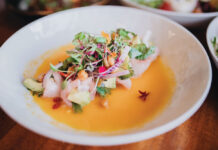Dance and music take audiences on a journey through time.
Story by Serene Gunnison
Photographs by Joshua Hardin & Azelan Amundson
A pair of torches scarcely illuminates the darkened stage. The audience can hear the sound of waves crashing on the beach just beyond. Suddenly, the drums start beating rapidly. The lights come on, and the hula performers come dancing onto the circular stage. This is the Old Lāhainā Lūʻau, one of Maui’s most genuine celebrations of island culture.
Cultural and historical accuracy are guiding principles at Old Lāhainā Lūʻau, and this fusion of education and entertainment is evident. As the sun dips below the horizon and the stage lights go up, guests are taken on a journey through time, transported by hypnotic dance and mo‘olelo (stories) of Hawaiian gods and great leaders.
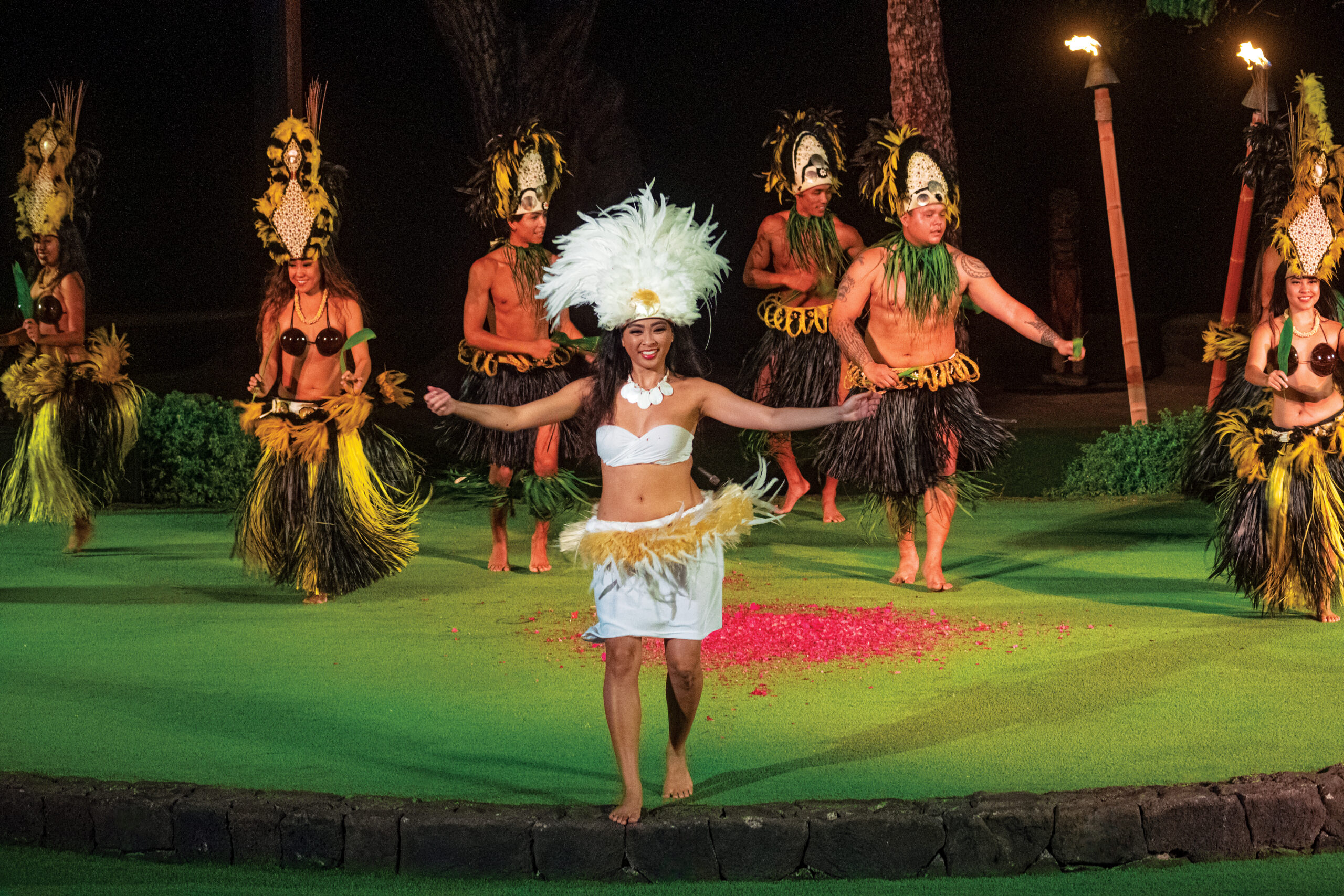
“The experience here at the Old Lāhainā Lūʻau is a little bit different. The show is all based around the history of Hawai‘i,” said Kapono Kamaunu, the kumu who leads the dancers. “Each night the guests get a little glimpse of what the history is.”
As the show progresses, narrators give the audience an account of scenes from Hawaiian lore that the dances are depicting.
“Old Lāhainā Lūʻau helps us continue to perpetuate the culture and present it in an entertaining way, yet still educate the guests about the history,” Kamaunu said. “As practitioners, we get to tell the story through the chants, through the hula, through the music, through the mo‘olelo, or the stories that we share about our Hawaiian people.”
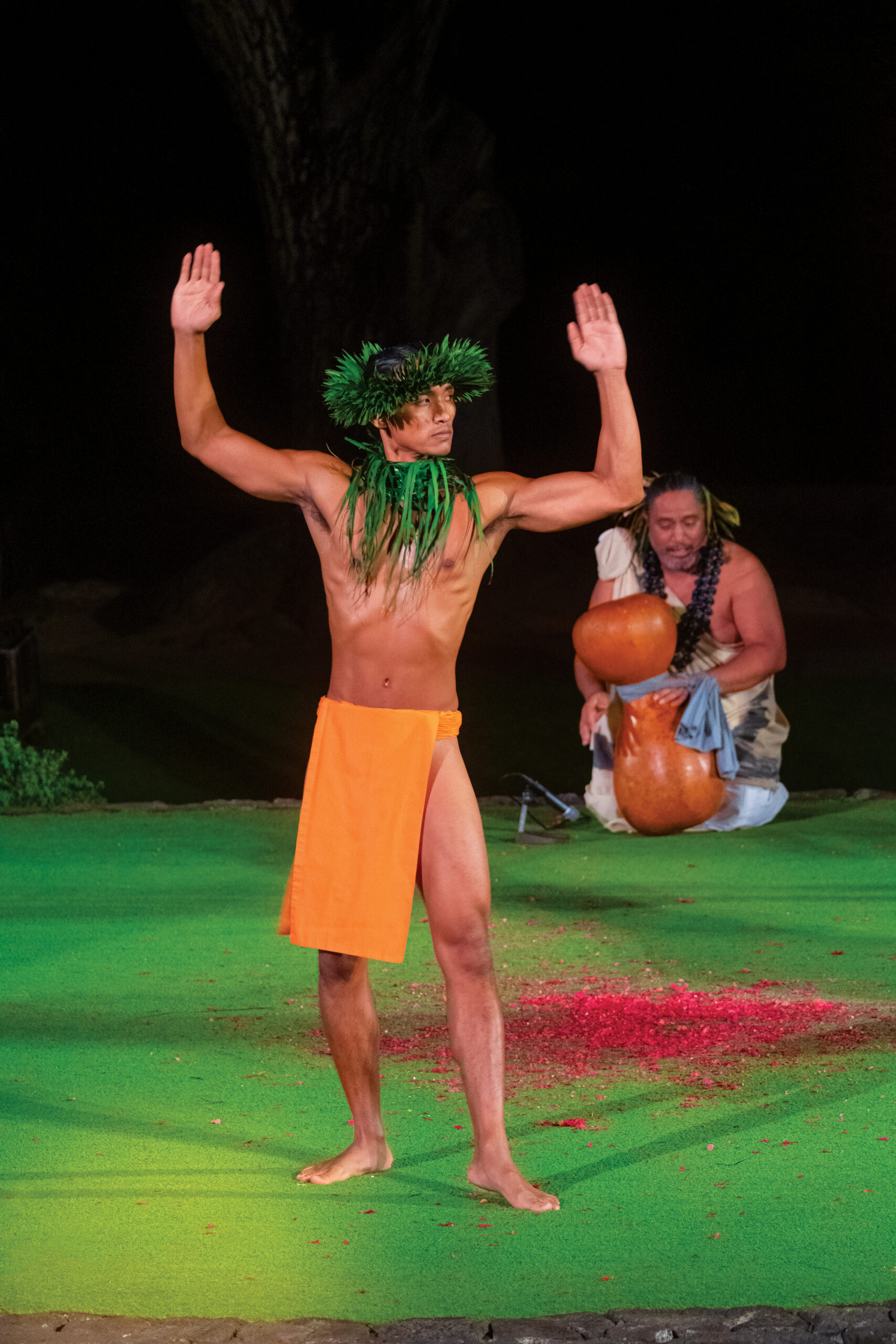
The hula that you see at Old Lāhainā Lūʻau is a tradition that has been passed down from generation to generation. All the songs and mele tell the story of Hawai’i.
The show traces two millennia of Hawaiian history, beginning with the story of Pele’s voyage to the Hawaiian Islands and the first Polynesian settlement on the islands.
Number by number, hula carries guests forward in time, depicting pre-contact society, the arrival of the missionaries, the subsequent banishment of Hawaiian culture, and the near-death of hula itself.
“The hula was banned for many, many years, until the Merrie Monarch, King David Kalakaua, restored the hula back in 1883 at his coronation ceremony,” Kamano said. “The hula that you see at Old Lāhainā Lūʻau are many of those hula that were restored during that era.”
Through their dances, the hula dancers at Old Lāhainā Lūʻau tell the story of Hawaiian history and culture, including legends and historical events. Narrators help fill in the audience on the significance and meaning of the performances as they watch them. The dances and costumes at the luau represent the ever-evolving hula styles.
Beyond the hula and historical depictions, all facets of Old Lāhainā Lūʻau are steeped in authenticity. Pre-show activities beckon guests to learn traditional dances, connect with Hawaiian artisans, and watch as the ‘imu (underground oven) is unearthed, revealing the roast pig below.
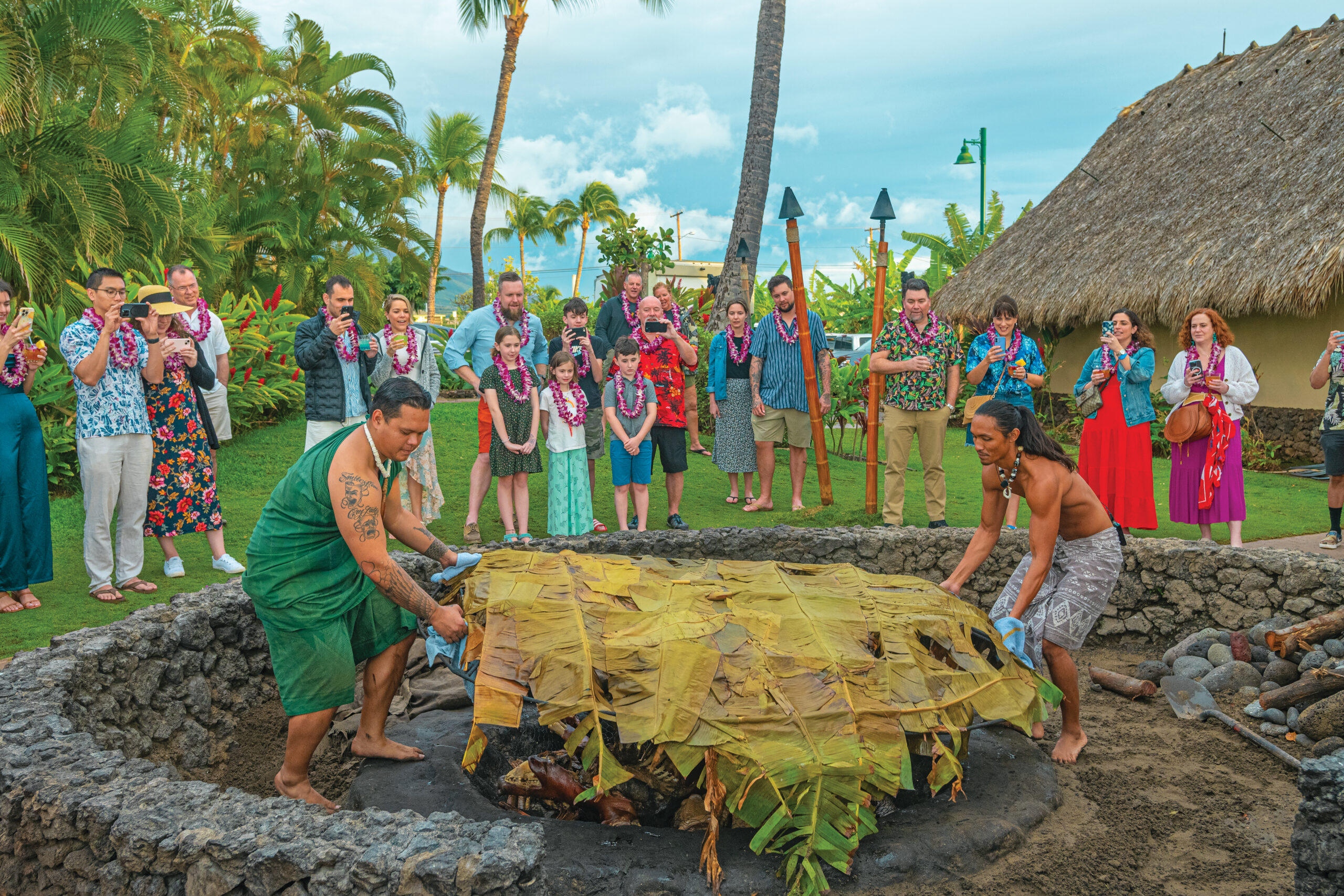
Come dinner, guests are given the opportunity to try a selection of traditional dishes, like pua‘a kalua (kalua pork), laulau (meat or fish dish wrapped in taro leaves), poke, and poi.
“We stick strictly to the Hawaiian culture, down to our food, to the show,” longtime Old Lāhainā Lūʻau employee Kona Pokipala said. “We try to educate our guests about even down to the taro root, our pre-shows, and everything. It all has to do with Hawaiian native culture. … That’s what our culture is all about, anyway. Friends, ‘ohana (family), and just having a good time. That’s what we do here at the lu‘au.”
Traditional Hawaiian dishes made with locally grown ingredients are presented in one of the four meal courses. Sous Chef Brandon Fujiwara prepares plates of food for lu‘au guests. Employees lift the leaves off the ‘imu, or underground oven, soon to reveal the roast pig that has spent hours inside steaming.
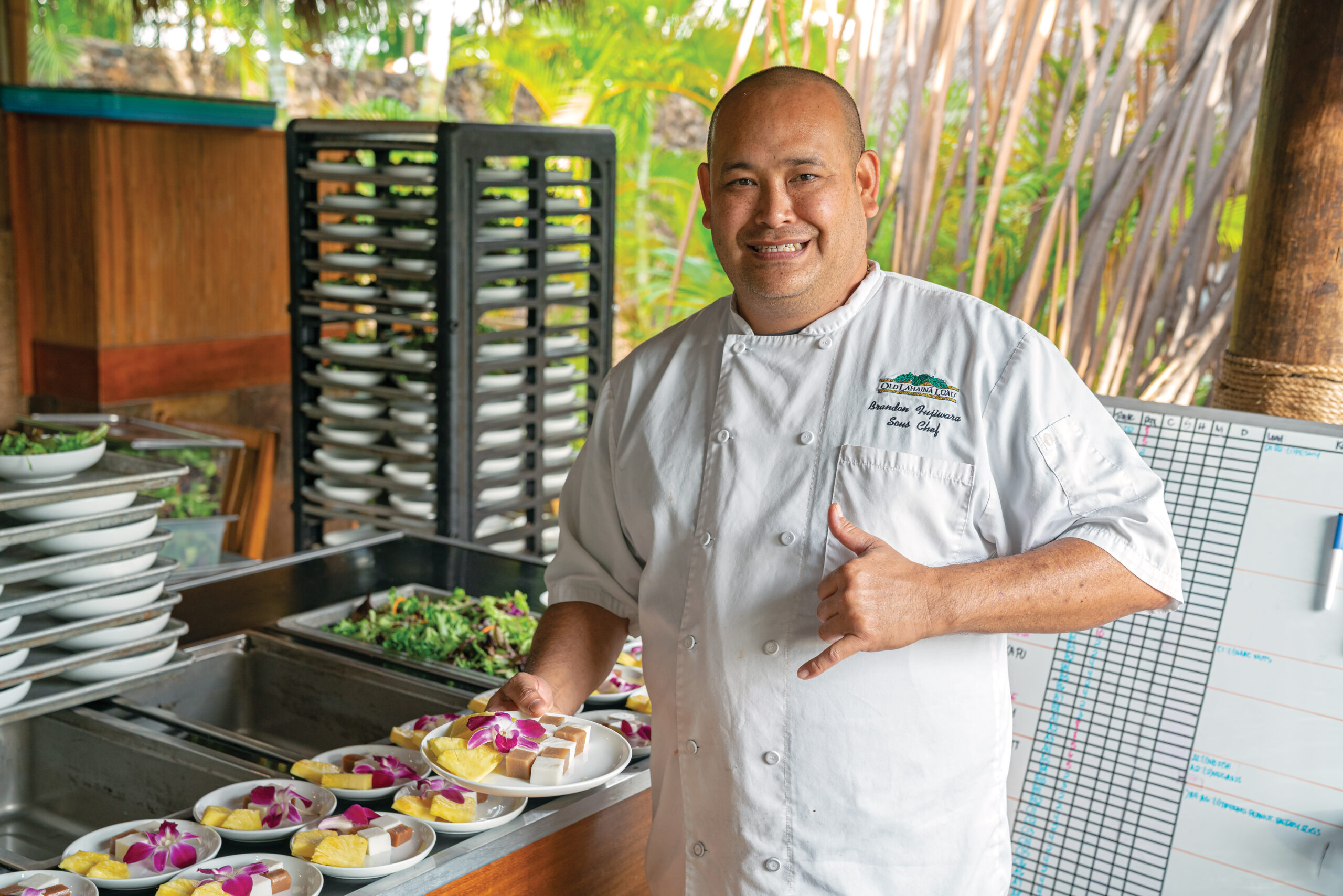
Click here to subscribe to Maui Nō Ka ‘Oi Magazine





